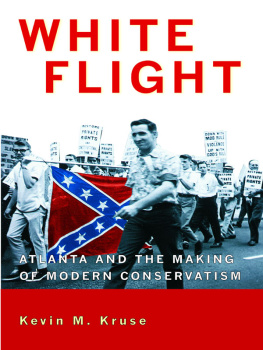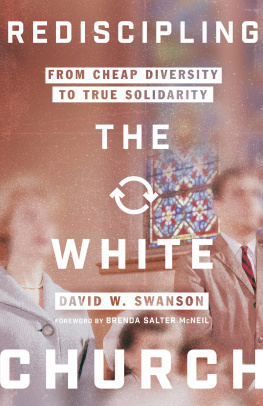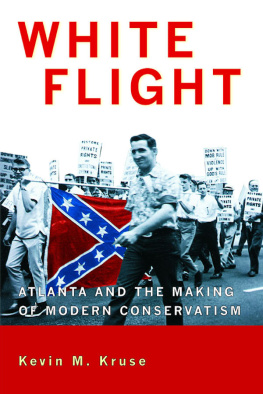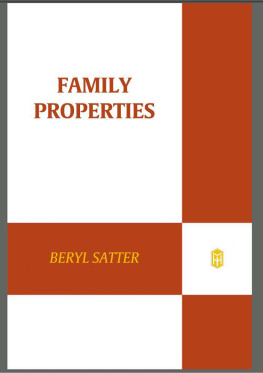Library of Congress Cataloging-in-Publication Data
Mulder, Mark T., 1973
Shades of white flight : evangelical congregations and urban departure / Mark T. Mulder.
pages cm
Includes bibliographical references and index.
ISBN 9780813564838 (hardcover : alk. paper) ISBN 9780813564821 (pbk. : alk. paper) ISBN 9780813564845 (e-book)
1. United StatesRace relationsHistory20th century. 2. EvangelicalismUnited StatesHistory20th century. 3. RaceReligious aspectsChristianity. 4. Identification (Religion). 5. RacismUnited StatesHistory20th century. 6. African AmericansIllinoisChicagoHistory20th centuryCase studies. 7. WhitesIllinoisChicagoMigrationsHistory20th centuryCase studies. I. Title.
E184.A1M78 2015
305.80097309'04dc23
2014021722
A British Cataloging-in-Publication record for this book is available from the British Library.
Copyright 2015 by Mark T. Mulder
All rights reserved
No part of this book may be reproduced or utilized in any form or by any means, electronic or mechanical, or by any information storage and retrieval system, without written permission from the publisher. Please contact Rutgers University Press, 106 Somerset Street, New Brunswick, NJ 08901. The only exception to this prohibition is fair use as defined by U.S. copyright law.
Visit our website: http://rutgerspress.rutgers.edu
Manufactured in the United States of America
For Dad and Mom, in appreciation of your steadfastness, commitment, faith, and love
The tale of these Christian Reformed Church congregations in the Chicago neighborhoods of Englewood and Roseland has been percolating a long time. The continuing and seemingly intractable nature of racial residential segregation, along with dynamic urban and suburban housing patterns, ensures that the story remains relevant; even as poverty seems to shift to inner-ring suburbs, segregation persists. Established traditions, habits, and religious practices continue to matter in the milieu of the urban United States. I hope here to make a little more sense of the complex manner in which faith practices, in particular, influence the structures and residential patterns of the metropolitan United States.
The narrative here tells an episode from the history of my own religious and ethnic tribe. The larger significance of it, though, resides in what we can learn that enhances our understanding of residential segregation. With that in mind, the reader should not necessarily perceive this book as a judgment. (Indeed, the crafting of this account included a good deal of self-interrogation as to whether I would have the courage to relinquish my own white privilege in similar circumstances.) This book is less about the people involved than it is about the organizational and institutional forces that continue to shape cities. Moreover, it is about illuminating religious practices, structures, and agency within the shifting sands of residential inequality. In the end, I see it as a call to become ever more attuned to the subtle distinctions that exist in religious life and habits and how they might manifest in meaningful ways throughout society.
Aspects of appeared earlier as Evangelical Church Polity and the Nuances of White Flight: A Case Study from the Roseland and Englewood Neighborhoods in Chicago, in Journal of Urban History 38, no. 1 (2012).
I am honored to have had the opportunity to speak with individuals involved in the events depicted in this book. Pastors Charles Terpstra (now deceased) and Derke Bergsma generously offered time, stories, and perspective regarding what they had both participated in and witnessed. I am grateful to these two gentlemen. In addition, I would like to recognize the unnamed laypeople who agreed to be interviewed about their experiences. On their porches in Roseland, they offered me hospitality and insight.
During the research and writing of this book, I benefitted greatly from participation in two Seminars in Christian Scholarship at my home institution, Calvin College. The first, under the guidance of Steve Warner, offered the opportunity to examine congregational diversity in North American religion. The second, with Michael Emerson, examined the continuing significance of race in congregational life. Both seminars resonate through the pages here, and both Steve and Michael deserve hearty thanks. I offer my gratitude as well to my colleagues who participated in those seminars for the rapport-filled environments. I am also grateful to my colleague, John Witvliet, director of the Calvin Institute of Christian Worship, who was instrumental in organizing those seminars and has been influential in supporting my line of research in recent years.
Professors Victor Greene and Amanda Seligman challenged and helped improve many of the arguments here. I have appreciated their mentoring. At Calvin College, a very special thanks goes to my colleagues in the Department of Sociology and Social Work. The collegial environment there nurtured this process, and it is good to labor among fellow travelers. In addition, the departments Deur Award supported the latter stages of crafting this volume. Early on, the Calvin College Center for Social Research provided a grant to fund transcription. I offer my thanks to Neil Carlson, director of the center, for the continued and consistent support in numerous avenues of inquiry.
Very little of this history could have been told without the assistance of faithful archivists. My thanks to Hendrina Van Spronsen and Dick Harms at the Heritage Hall Archives of Calvin College; Geoffery Reynolds at the Joint Archives of Holland, Michigan; Marci Frederick at the Dutch Heritage Archives at Trinity Christian College, Palos Heights, Illinois; and Russ Gasero at the Archives of the Reformed Church in America at the New Brunswick Theological Seminary, New Jersey. In addition, it should be noted that Bob Swierengas prolific writing about the Dutch in the United States, along with his careful wisdom and advice, proved foundational to the volume here.
My good friend Jamie Smith offered encouragement years ago regarding the potential of this project and its significance. Since then, he has been unfaltering in his prodding and wisdom. I owe him deep gratitude. I would also like to thank Peter Mikulas, who demonstrated a keen interest in this manuscript and shepherded it though to publication. Though he no longer teaches at Calvin, my friend Kevin Dougherty and I spent three years together in neighboring offices. He has continued to offer great encouragement. I am also grateful to Gerardo Marti for his thoughtful counsel regarding this project.
Thanks as well to my children Seth, Case, Noelle, and Maya. Their joy and inquisitiveness inspire me. Of course, none of this would be possible without my wife, Dawn. In ways too many to count and depths too profound to measure, she has been an encourager, a friend, and a confidante. Finally, I dedicate this book to my parents, Harold and Gert Mulder. They have supported me unflaggingly and have been models of love and steadfastness.
SHADES OF WHITE FLIGHT
Racial inequality and oppression are persistent themes in the study of the urban United States. In-depth analyses have revealed persistently segregated cities and suburbs that offer disparate opportunities on the basis of race and location. Concealed behind the gleaming skyscrapers of the downtown business districts and the SUV-flooded parking lots of P. F. Changs, Pottery Barns, and megachurches in suburbia reside bleak and depressed communities. Inarguably, the vast majority of these neighborhoods tend to be populated by racial minorities. Dilapidated homes and closed-down industrial plants and warehouses dot the landscape of these districts. The detritus and shadows of a long-gone manufacturing economy remind the unemployed and underemployed residents of these neighborhoods of the broken promise of the American dream. With poor housing stock and few walkable amenities, revival of these neighborhoods (both urban and suburban now) seems profoundly unlikely. For better or worse, these places will probably never see an influx of coffee shops, bicycle stores, and hipster pubs.







